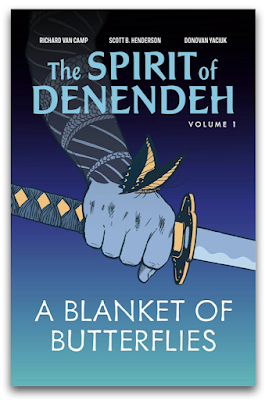Illustrated by Mike Deas
Scholastic Canada
978-1-4431-9133-3
32 pp.
Ages 6-10
2022
Learning and teaching about amazing scientists, athletes, activists and other important persons who have helped shape Canada's history have been made all the easier and captivating with Elizabeth MacLeod and Mike Deas's illustrated biography series, Scholastic Canada Biography. Their latest collaboration highlights the inventiveness and achievements of Quebec's Joseph-Armand Bombardier, inventor of the snowmobile.
 |
| From Meet J. Armand Bombardier by Elizabeth MacLeod, illus. by Mike Deas |
 |
| From Meet J. Armand Bombardier by Elizabeth MacLeod, illus. by Mike Deas |
As he grew older and established his own garage, married and had kids, Armand found a new reason to pursue his snow machine when his young son could not get to hospital because of the snow. Using skis instead of wheels, repositioning the engine, and adding special toothed gear wheels, Armand's machine finally worked. It may not have looked like the snowmobile we know today, but it was the foundation for numerous other machines, from tractor track attachments and muskeg tractors to the famous Ski-Doo (only named this because of a typo of Ski-Dog).
When Joseph-Armand Bombardier died in 1964, he left a legacy of extraordinary invention and Elizabeth MacLeod makes sure to tell that story in addition to his personal details. It's a rich legacy of vision and pursuit that impacted the individual as well as commercial enterprises from the oil fields and resource development to the military. Yet Elizabeth MacLeod still makes sure to give us the personal side of Bombardier's story, particularly the home life and education and tragedies that compelled him to invent a snow machine. (A timeline of key events in Joseph-Armand Bombardier's life and afterwards is appended to the story, along with several photos.)
 |
| From Meet J. Armand Bombardier by Elizabeth MacLeod, illus. by Mike Deas |
Though Mike Deas creates sketch-like illustrations, they are actually sophisticated art that blend watercolour, gouache and ink with digital means. As such, he gives both a gravitas and lightness to the story with his artistry. From Bombardier taking apart the family car as a child to children using a school snowmobile bus in the 1950s, Mike Deas gives his art some playfulness. But, recognizing the seriousness of a child's illness and the implementation of Bombardier's designs for all manner of machines, he also gives his art an authentic quality, as recording important milestones in Bombardier's life and inventing history. The illustrations help tell the story but never overwhelm or trample it with realism.
I recall teaching students about Canadian scientists and including the story of Joseph-Armand Bombardier but my students' learning would have been far greater if they'd had access to Elizabeth MacLeod and Mike Deas's Scholastic Canada Biography of this inventor. They make him human and tell his story with completeness and consideration, and remind us of the heritage of the Bombardier name and his legacy.
• • • • • • •
With Meet J. Armand Bombardier, the Scholastic Canada Biography series by Elizabeth MacLeod and Mike Deas now includes ten titles with an eleventh (Meet Buffy Sainte-Marie) scheduled for May of this year. I encourage schools and young readers to check out the whole series.
Meet Viola Desmond (2018)
Meet Chris Hadfield (2018)
Meet Tom Longboat (2019)
Meet Elsie MacGill (2019)
Meet Willie O'Ree (2020)
Meet Terry Fox (2020)
Meet Chris Hadfield (2018)
Meet Tom Longboat (2019)
Meet Elsie MacGill (2019)
Meet Willie O'Ree (2020)
Meet Terry Fox (2020)
Meet Thérèse Casgrain (2021)
Meet David Suzuki (2021)
Meet Mary Ann Shadd (2022)
Meet J. Armand Bombardier (2022)
Meet Buffy Sainte-Marie (for release May 2023)


































